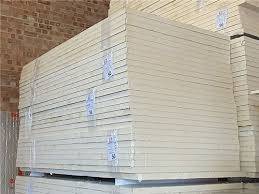Dry lining is a simple method that can provide your wall and ceiling constructions a smooth finish, but also contribute to your home thermal performance, especially if adequately combined with some insulator bonded to the surface of plasterboard placed onto the wall or ceiling surface. As you can probably assume, we are talking about a special technique which basically includes applying plasterboard onto a masonry, timber and metal surfaces. Its alternative is the so called plastering which is a bit more complicated task, including additional materials, such as water. This is why it does not come as a surprise that dry lining methods have become increasingly popular over the last fifteen years, mostly due to the fact that many insulation products manufacturers have developed special plasterboards with insulation bonded to the surface thus adding to your home insulation.
Now, the first difference you need to make is the one between dry lining techniques applied to timber and metal surfaces (in walls and ceilings) and masonry walls, since its structure and construction involves different methods of installation, different positioning and different material used. However, regardless of the named distinction, certain issues need to be addressed and certain questions answered, prior to the installation process.
Firstly, always perform proper measurements of the wall or ceiling, since plasterboards need to be positioned in accordance with the stud centers. This may include, alternatively ordering already cut to size boards or cutting them yourself so they fit the intended surface.
Secondly, always consider specific characteristics of the place where dry lining is applied, especially in terms of moisture and fire hazards. Namely, if you are dealing with places with high humidity and condensation, make sure to purchase moisture resistant plasterboards. Also, if there is a risk of fire, especially if applicable regulations prescribe the level of protection, make sure to use fire rated dry lining or even use two layers of plasterboards in order of meeting the prescribed values. Timber and metal frames or masonry?
As mentioned before, different dry lining techniques are applied depending on whether you are dealing with metal and timber constructions (walls or ceilings) or masonry walls.
Applying plasterboards to masonry walls is usually more complicated than applying them to, let's say timber frames, and it is commonly done by using the so called "dot and dub" technique which basically includes adding an adhesive to the wall surface which is used to hold the plasterboard which needs to be checked both horizontally and vertically in order of achieving adequate aligning.
Now, if you are dry lining your timber wall, you can do this by either tacking the plasterboard onto the wall by using nails or by screwing it onto the surface by using screws. Either way, make sure to choose properly sized nails and screws, preferably 40 mm nails and 25 mm screws. If you are having trouble deciding which option to go for, the thing that may help you decide is the fact that screws will hold the plasterboard more tightly than the alternative nails, but may involve some additional equipment. Always to the necessary measurements of the wall properly and do cut the boards accordingly. Make sure to place the first fixings (nails or screws) not too far apart, since this will ease on the process, simply because you will not have to hold the plasterboard panel but the fixings will, so you can dedicate your energy and time to placing the rest. However, regardless of whether you are using screws or nails, make sure not to place them too deep because otherwise you might damage the paper envelope. We advise you to start from the edges and not the middle, since this way the process will be not only easier but also faster, due to the fact that you will not have to perform additional measuring and cutting. Other fixings are best placed 150 mm for nails and 200 mm for screws around the stud, but you better check and follow the manufacturers instructions.
If you are applying dry lining to your ceiling, the procedure is pretty much the same, but can be a bit more tiring due to the fact that you have to hold the boards up, so some additional word of advice is to place the fixings accordingly so you won't have to hold the boards all the time and better opt for some lighter plasterboards and rest your arms.
Finally, it is of great importance to choose the dry lining materials wisely so always consult a professional or choose product from reputable manufacturers. Also note that there is a difference between plasterboards, so always check the manufacturing specification or even take it a step further and look for some plasterboards that have been reinforced with some dry lining insulation material (like PIR boards) or even those that have substantial acoustic characteristics for a noise-free environment.


